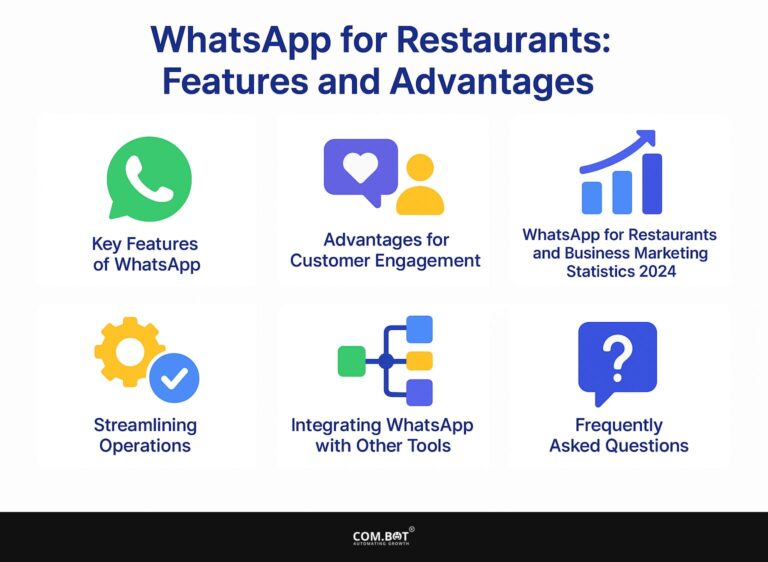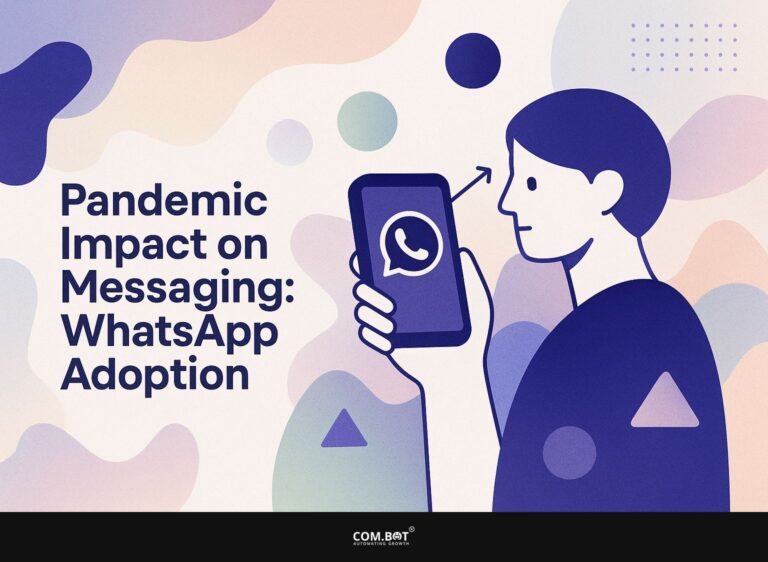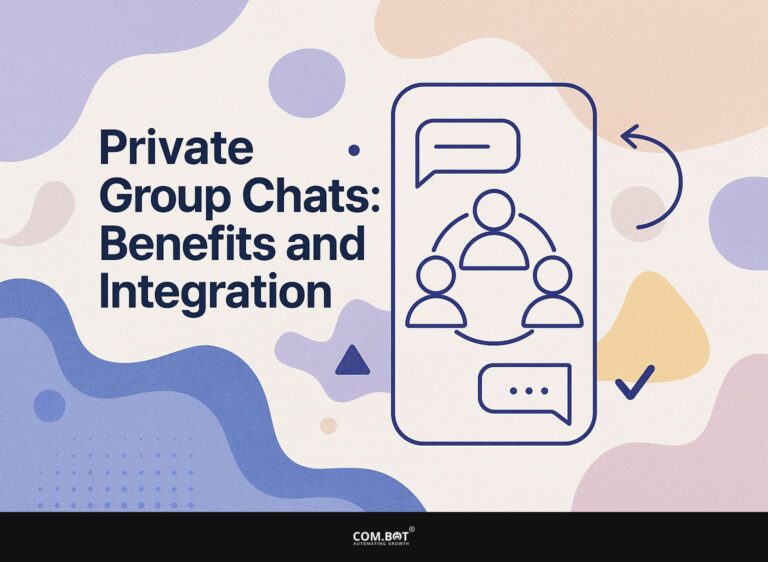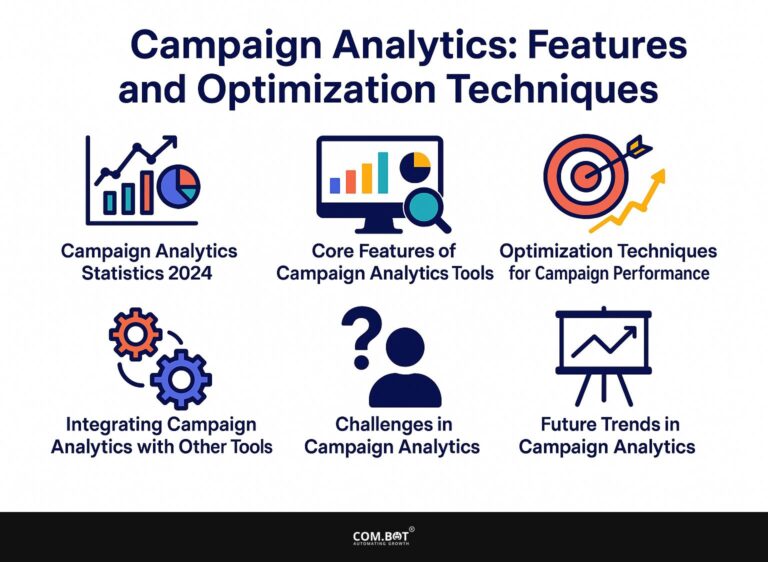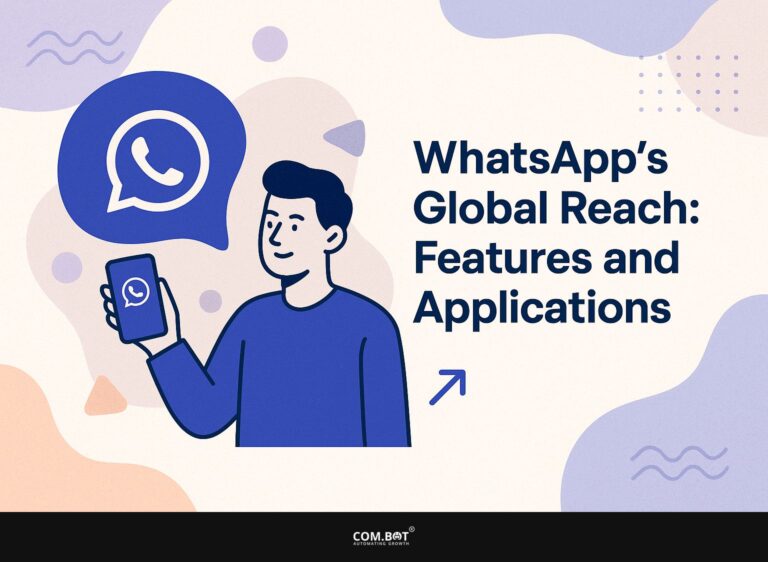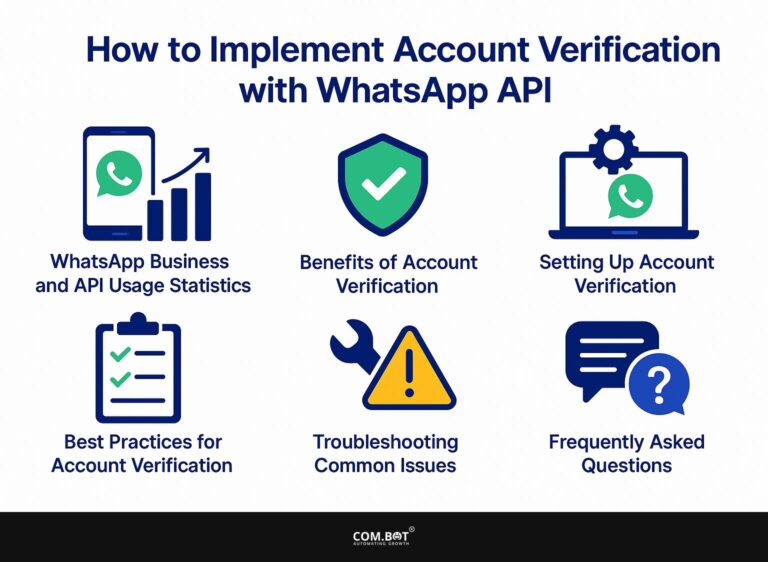WhatsApp API Setup: Components and Benefits
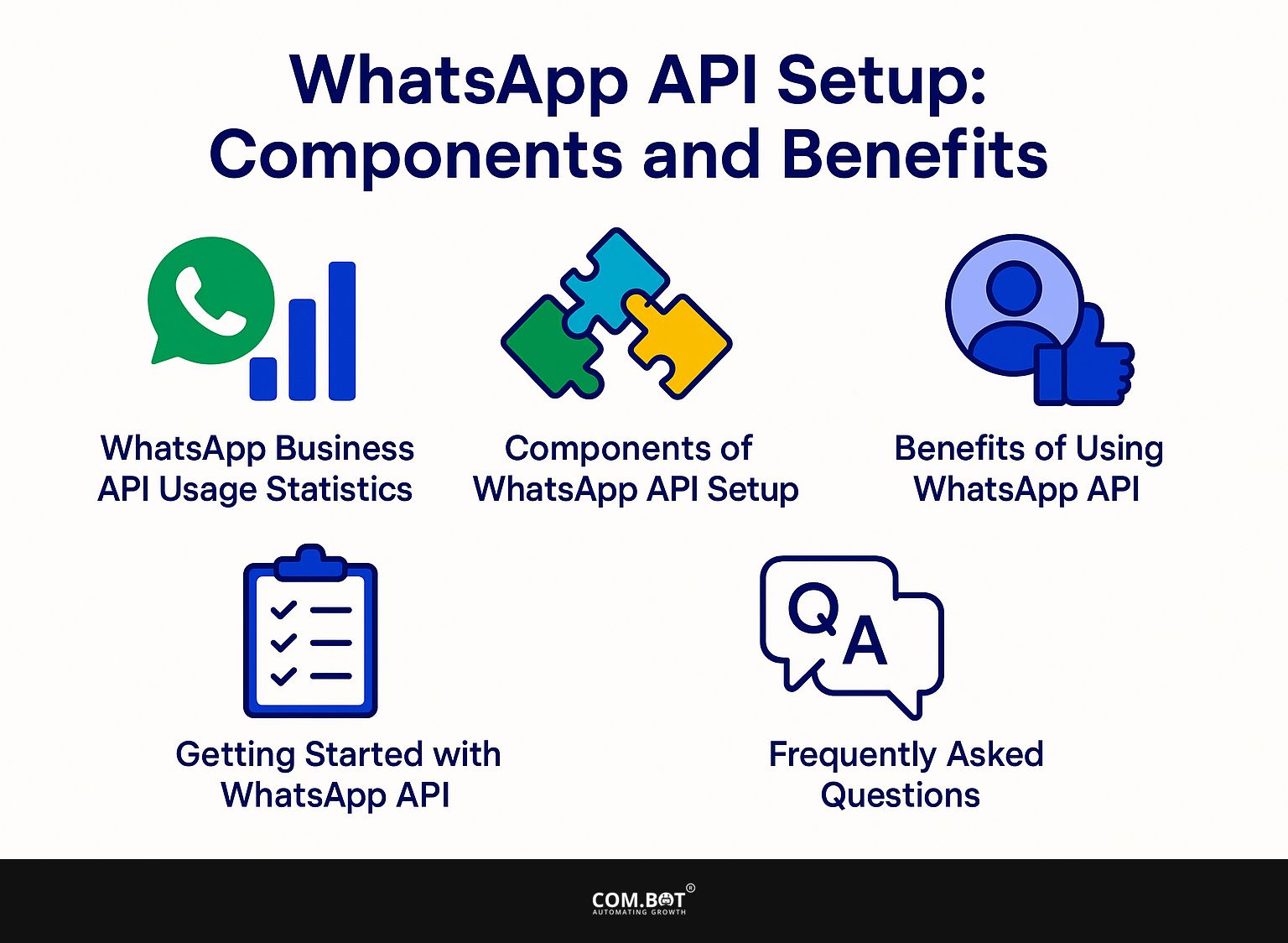
Good communication with customers is important, and the WhatsApp Business API provides a strong option for businesses. Created by Meta, this API improves marketing by using automation and smooth interactions.
In this article, we will examine the key steps to set up the WhatsApp API and its benefits, helping your business improve customer interactions. Learn how to use this tool to get the most interaction and work done effectively!
Key Takeaways:
- WhatsApp API is a useful tool for businesses to improve customer communication and make processes more efficient.
- Setting up WhatsApp API requires a business account, registered phone number, and API client configuration.
- Benefits of using WhatsApp API include improved customer communication, automation through chatbots, and seamless integration with existing systems.
- 1 WhatsApp Business API Usage Statistics
- 2 Components of WhatsApp API Setup
- 3 Benefits of Using WhatsApp API
- 4 Getting Started with WhatsApp API
- 5 Frequently Asked Questions
- 5.1 1. What is the WhatsApp API and what are its components?
- 5.2 2. What are the benefits of setting up the WhatsApp API for my business?
- 5.3 3. How do I set up the WhatsApp API for my business?
- 5.4 4. What are pre-approved message templates and how can I use them?
- 5.5 5. Is it possible to create custom messaging flows with the WhatsApp API?
- 5.6 6. What types of businesses can benefit from setting up the WhatsApp API?
1. What is WhatsApp API?
The WhatsApp Business API allows businesses to send and receive messages programmatically, providing a seamless communication channel for service inquiries and notifications. The WhatsApp Business API helps companies in different industries improve how they interact with customers.
For example, a retail brand can send order confirmations and shipping updates automatically, so customers are always kept in the loop. Airlines in the travel industry use the API to provide live flight updates and help travelers with questions.
Setting up typically involves connecting the API to current CRM systems, which enables customized communication and automated replies.
Tools like Twilio and MessageBird make this connection easier by using the API to handle customer interactions smoothly. For an extensive analysis of this trend, our comprehensive study on the benefits of using WhatsApp API for messaging examines various industry use cases.
2. Why Use WhatsApp API?
Using the WhatsApp API can greatly improve customer interaction, as 98% of messages are read compared to only 20% for emails. This high open rate comes with the feature to automatically handle interactions, which saves time and makes customers happier.
For instance, Domino’s Pizza launched an ordering system via WhatsApp, resulting in a 30% increase in repeat orders. Companies like Vodafone also use the API to provide real-time support, decreasing response time by 50%.
To take advantage of these benefits, businesses should consider using tools like Twilio or MessageBird, which help with API connection and make communication with customers smooth. For a deeper understanding of how these features can enhance various industries, see also: WhatsApp API: Applications, Features, and Benefits for Various Industries.
WhatsApp Business API Usage Statistics
WhatsApp Business API Usage Statistics
User Engagement and Communication: Global User Statistics
User Engagement and Communication: Business Communication Preferences
User Engagement and Communication: Chatbot Usage and Impact
User Involvement and Communication: Information from Different Areas and Nations
The WhatsApp Business API Usage Statistics give a detailed summary of how users interact, their communication choices, and information about different areas. These metrics highlight the extensive reach and impact of WhatsApp as a business communication tool.
User Engagement and Communication data shows that WhatsApp boasts 2.5 billion global users, with 5 million businesses leveraging its API for communication. The platform handles an astounding 100 billion messages sent daily, showcasing its popularity and reliability for both personal and business communications.
- Business Communication Preferences: WhatsApp is preferred by 54% of users for marketing It is an effective way for businesses to connect with their customers. The high 98% open rate of WhatsApp messages indicates that communications on this platform are highly effective in capturing user attention. Additionally, 67% of users prefer messaging over email or phone calls, emphasizing the shift towards instant, text-based communication methods.
- Chatbot Usage and Impact: There has been a 92% increase in chatbot usage on WhatsApp, demonstrating the growing reliance on automation to manage customer interactions. Furthermore, 55% of businesses use chatbots for lead generation, highlighting the role of AI in enhancing customer engagement and driving business growth.
- Regional and Country Insights: In Brazil, an impressive 96% of businesses use WhatsApp, indicating its critical role in the local market. India, with 487 million WhatsApp users The large number of users makes it an important area for WhatsApp to expand and increase its impact.
The WhatsApp Business API Usage Statistics illustrate the platform’s vast user base and its effectiveness as a business tool. With many people using it often and preferring to send messages, WhatsApp remains an important tool for businesses to improve customer communication and increase marketing success.
Components of WhatsApp API Setup
To set up the WhatsApp API, you need a business account and correct API settings for it to work properly. For a comprehensive understanding of how the API can benefit your business, check out the applications, features, and benefits of the WhatsApp API.
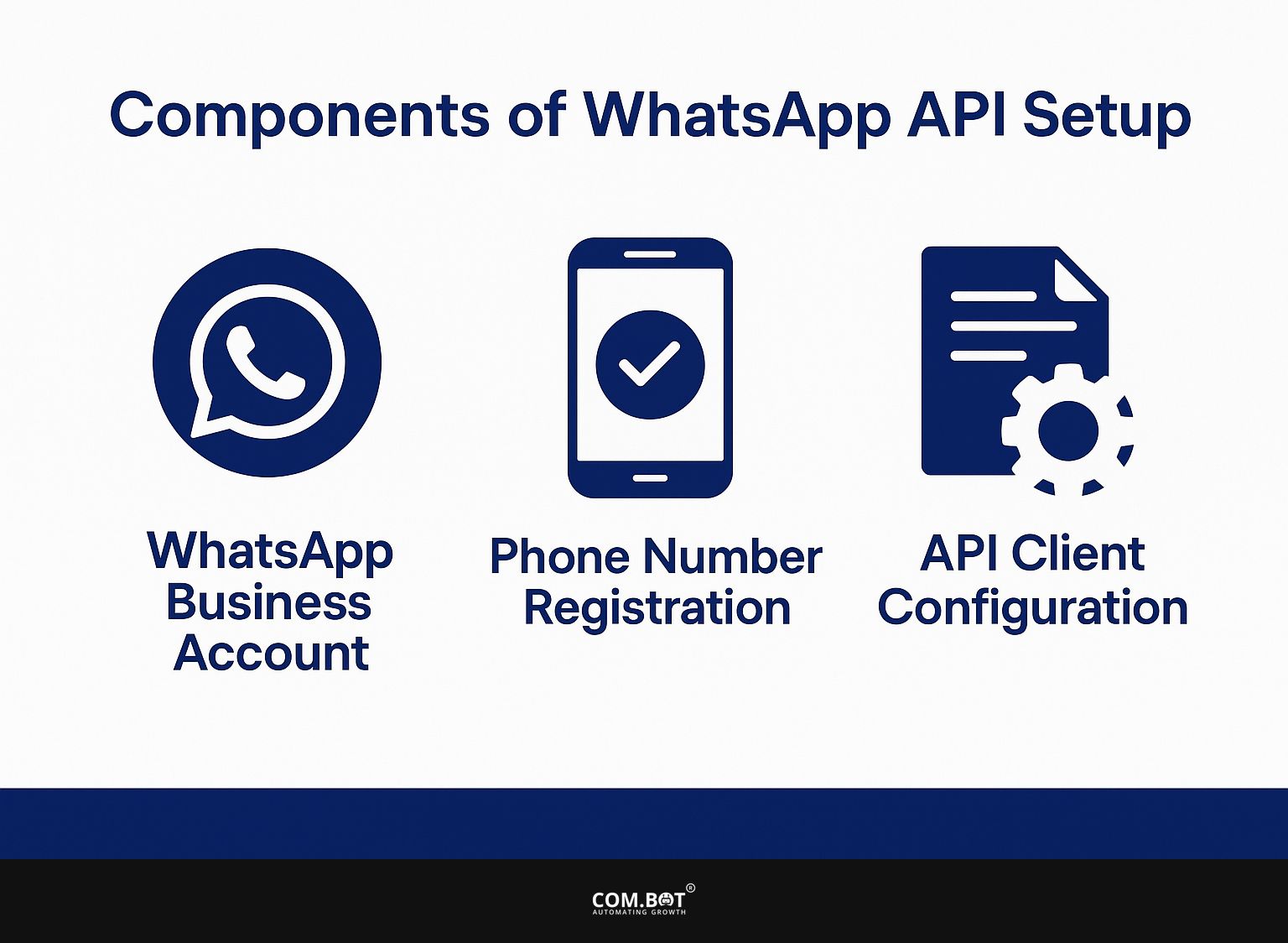
1. WhatsApp Business Account
Creating a WhatsApp Business Account is the first step in accessing the API, which requires verification of your business details via Meta’s platform.
To set up your account, begin by downloading the WhatsApp Business app. After setting up, complete the steps to register your business number. It should be a separate number, not connected to your personal account.
Next, confirm your business by entering correct information like the business name, type, and location. After your account is confirmed, set up a complete profile by adding information about your business, your working hours, and a photo that shows your brand. A well-organized profile increases customer trust and improves interaction.
2. Phone Number Registration
A dedicated phone number is required for the WhatsApp API, ensuring that all business communications are clearly distinguished from personal messaging.
To register a dedicated phone number with the WhatsApp API, start by choosing a number that isn’t currently linked to another account. Then, access the Facebook Business Manager to verify your business, which is essential for API access.
After verification, you’ll receive an API key, allowing you to integrate the number. Be aware that using shared numbers may lead to customer confusion and limit engagement, as responses can appear disjointed or unprofessional. Dedicated numbers help create a consistent brand presence, enhancing customer trust and interaction.
3. API Client Configuration
Setting up your API client requires configuring webhooks and creating message templates to guarantee that communication processes are smooth and efficient. Start by selecting a reliable API service like Twilio or Slack. Next, access the API documentation to understand required endpoints and authentication methods.
For instance, if using Twilio, generate an API Key in the console and configure your webhook URL to handle incoming messages. To test calls, use Postman by setting up a new request, typing in the endpoint, and adding any required headers or body data. Make sure your API responses are correct before sending them to your client.
Benefits of Using WhatsApp API
Using the WhatsApp API makes customer support and marketing more efficient and customized for each person. To explore how this tool can transform various industries, you can learn more about its applications, features, and benefits.
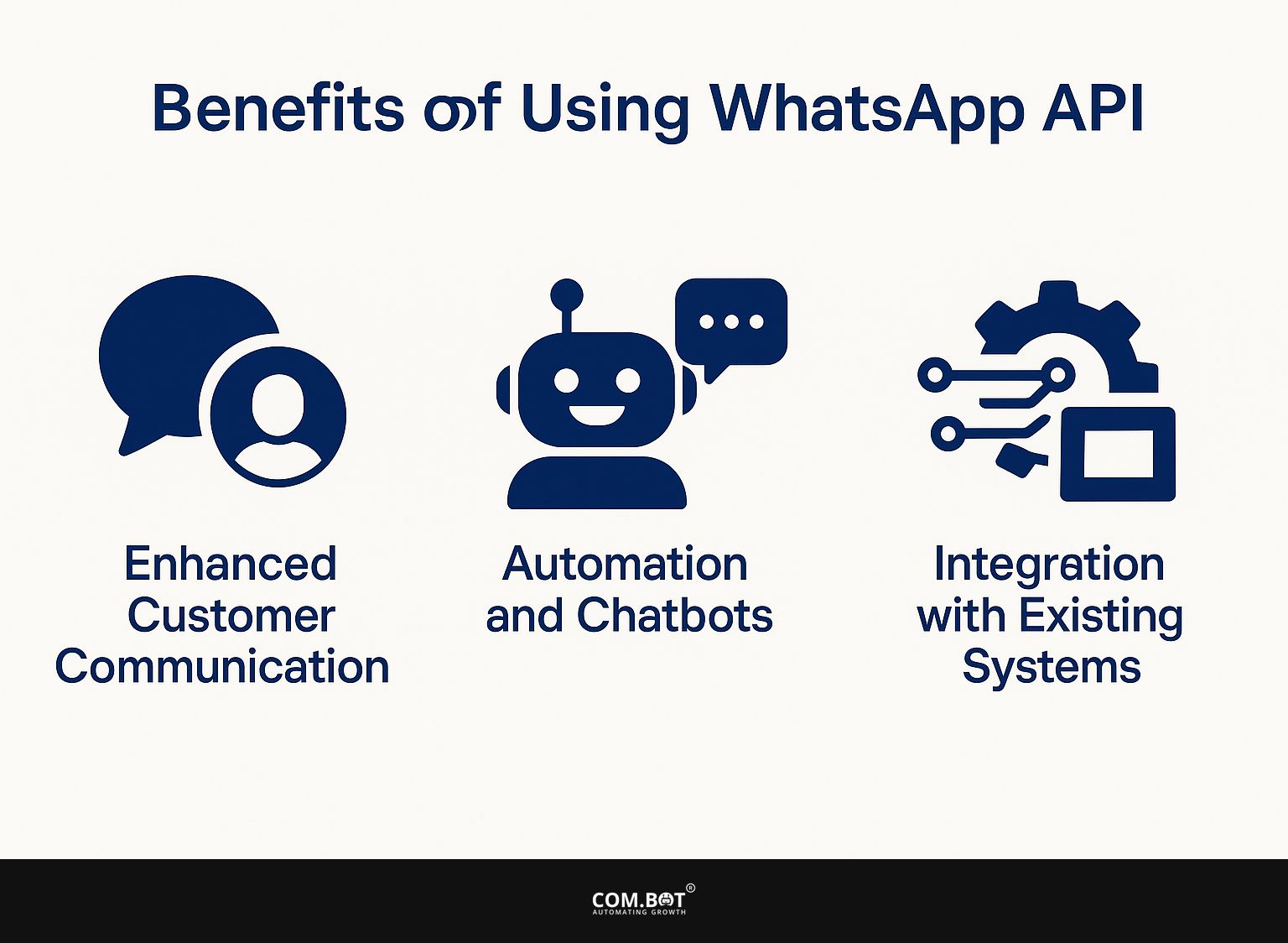
1. Enhanced Customer Communication
With the WhatsApp API, businesses can achieve real-time responses, drastically improving customer satisfaction and engagement rates. By using the WhatsApp API, companies can make interactions more personal, leading to a 40% quicker response time.
For example, Uber saw a 25% rise in customer interaction when they used messaging to quickly respond to questions. Tools like Twilio make it easier for businesses to set up systems that automatically answer frequently asked questions.
Businesses can establish these automatic replies for typical queries in just a few hours, which often results in better user satisfaction and higher retention rates.
2. Automation and Chatbots
Using the WhatsApp API to set up chatbots can handle frequent customer questions automatically, which cuts down on work and improves productivity. To set up your chatbot, start by registering for the WhatsApp Business API and obtaining your unique phone number.
Tools like Zixflow simplify the process of connecting different systems, allowing you to set up processes that automatically respond when certain keywords are detected.
For example, a message containing “tracking” could automatically provide customers with their order status. Alternatively, Convex Interactive offers user-friendly templates and built-in analytics for monitoring interaction performance. This lets you make changes to workflows regularly, resulting in better customer satisfaction and involvement.
3. Integration with Existing Systems
Connecting WhatsApp API with CRM systems like Salesforce improves customer data handling and makes communication easier.
To achieve this integration, start by creating a WhatsApp Business account and obtaining your API key. Next, use tools like Zapier to link WhatsApp with Salesforce by setting triggers for new messages or contacts. Set up the required fields so that data moves smoothly between the platforms. This integration provides real-time updates, turning customer interactions into useful information. This will make replies faster and tailor communication to individuals, greatly improving the user experience.
Getting Started with WhatsApp API
Using the WhatsApp API requires a step-by-step process that involves setting it up, connecting it to your systems, and solving frequent problems. This approach aligns with the principles outlined in our analysis of Com.bot Inventory Alert Bot.
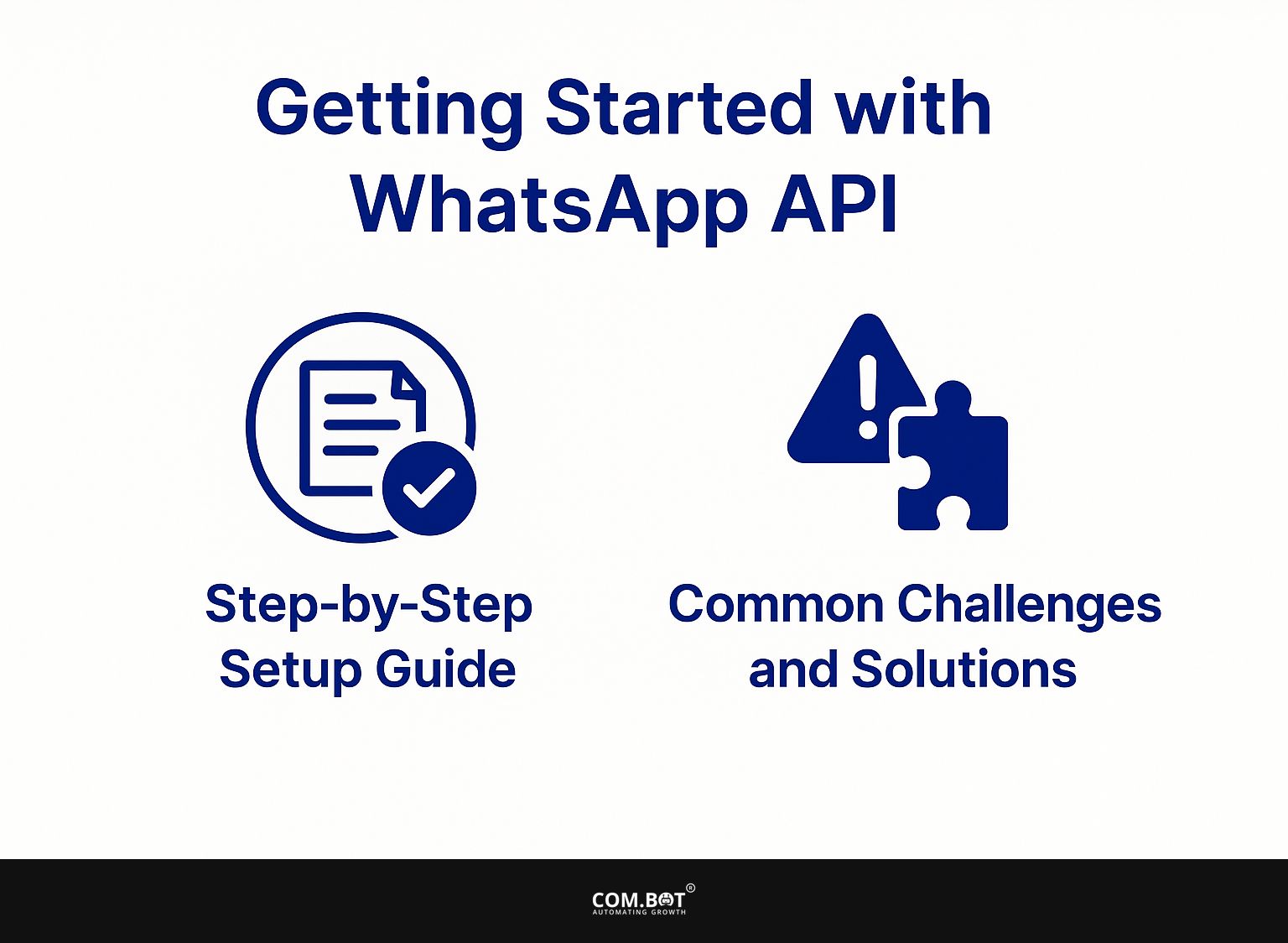
1. Step-by-Step Setup Guide
Follow this detailed setup guide to effectively launch your WhatsApp API integration in under 2 hours. Begin by creating a WhatsApp Business Account, which can be done in about 15 minutes.
Next, register your phone number; this step is important for recognizing users. After signing up, set up the API client with services such as Twilio or MessageBird. They give easy-to-use interfaces and detailed guides.
Spend about 30 minutes checking your API calls to make sure they work smoothly with your current systems. Launch your integration and monitor its performance over the next few days to adjust settings as needed.
2. Common Challenges and Solutions
Businesses often encounter challenges when implementing the WhatsApp API, but solutions exist to mitigate these issues effectively.
Common challenges include message delivery failures, API rate limits, connection issues, and user authentication problems. To fix message delivery problems, check that recipients have agreed to receive messages and follow WhatsApp’s rules. For rate limits, consider implementing exponential backoff to manage retries effectively.
Connection issues can often be resolved by using a reliable server or cloud service like AWS or Azure. Using strong authentication methods like OAuth can simplify user verification and improve security.
Frequently Asked Questions
1. What is the WhatsApp API and what are its components?
The WhatsApp API is a platform that allows businesses to integrate with WhatsApp for communication with customers. Its components include the API itself, pre-approved message templates, and the ability to create custom messaging flows.
2. What are the benefits of setting up the WhatsApp API for my business?
Using the WhatsApp API provides benefits like improved communication with customers, better support, and the ability to send specific and personalized messages to clients.
3. How do I set up the WhatsApp API for my business?
To set up the WhatsApp API for your business, you will need to go through the official WhatsApp Business API provider, which will guide you through the process and provide the necessary technical support.
4. What are pre-approved message templates and how can I use them?
Pre-approved message templates are messages that WhatsApp has checked and approved for specific purposes, like updating account details, reminding about appointments, and providing shipping information. These templates help send automatic messages to customers.
5. Is it possible to create custom messaging flows with the WhatsApp API?
Yes, the WhatsApp API allows businesses to create custom messaging flows, which can include options for customers to respond and interact with the business. These custom flows can be adjusted to match the particular requirements of your business and clients.
6. What types of businesses can benefit from setting up the WhatsApp API?
Any business that wants to improve their communication with customers and increase engagement can benefit from setting up the WhatsApp API. This includes ecommerce businesses, service providers, and any business that wants to provide a seamless and convenient way for customers to connect with them.
